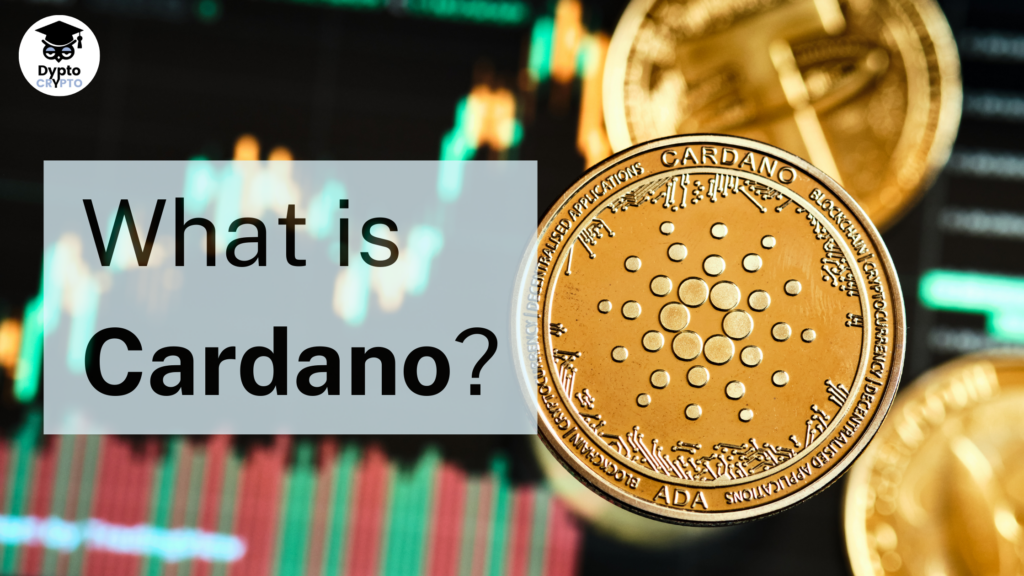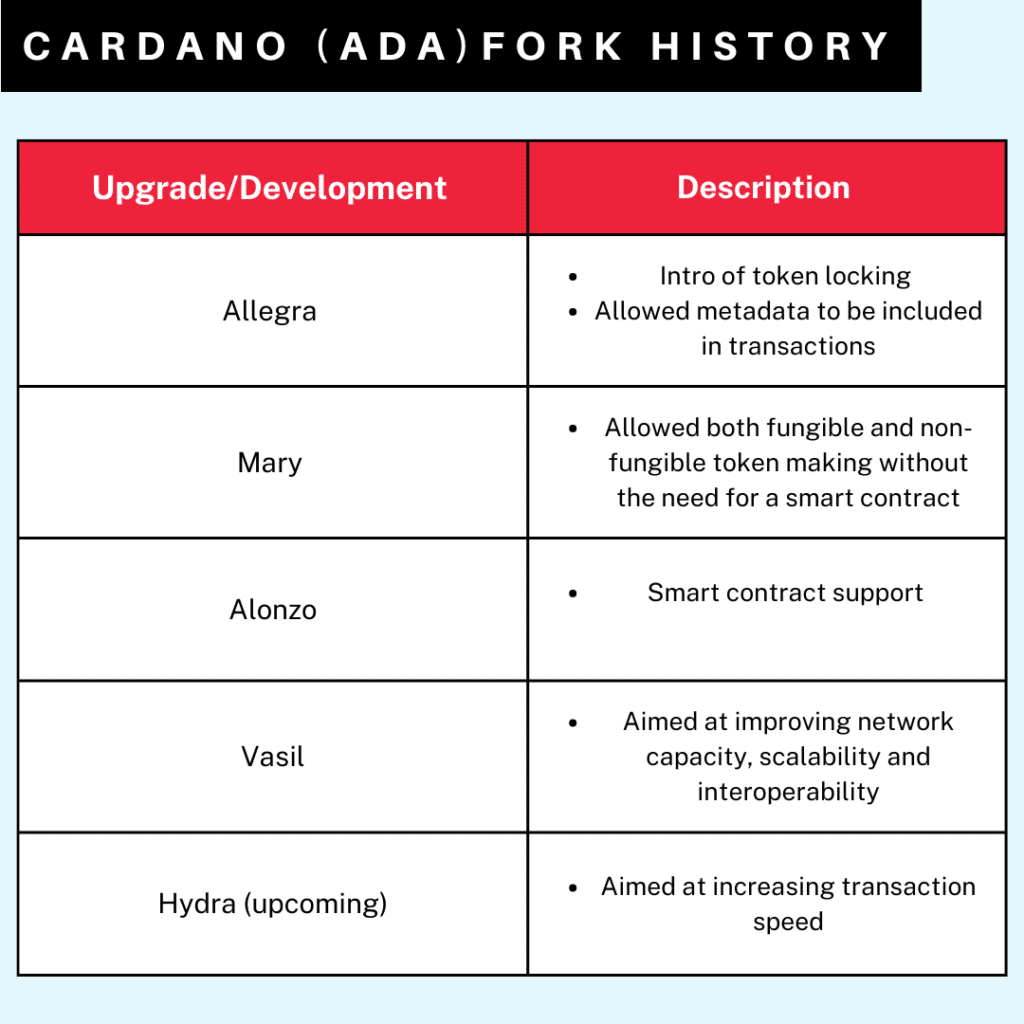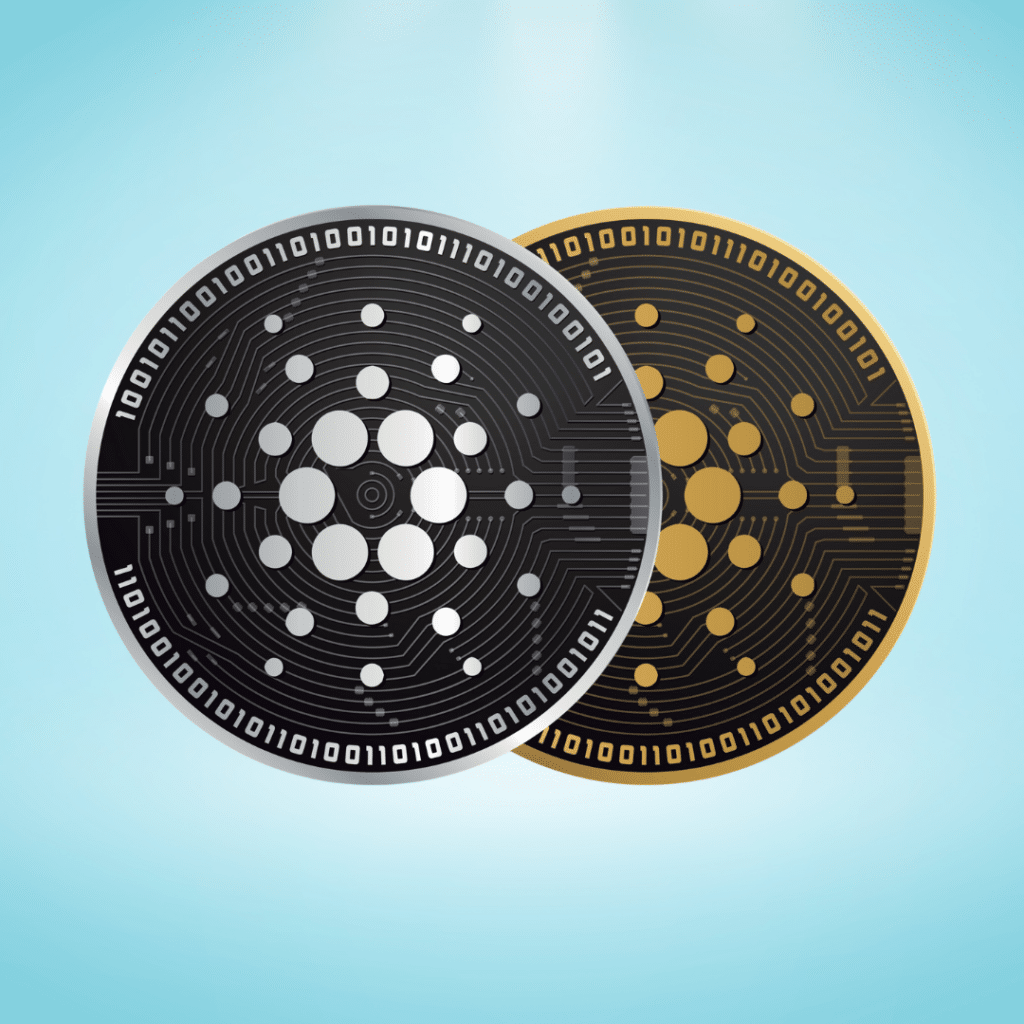What is Cardano?
Cardano is a decentralized blockchain network that aims to be like Ethereum, but better. It is home to the cryptocurrency ADA.
The Long Definition
Cardano is a blockchain network released in 2017. The network was originally designed as a faster, cheaper alternative to Ethereum, which at the time, used the proof-of-work (PoW) consensus mechanism.
In an attempt to achieve this, Cardano uses proof-of-stake (PoS). PoS is a consensus mechanism designed to be a more efficient alternative to the energy-intensive proof-of-work (PoW) used by Ethereum and Bitcoin.
The network’s native cryptocurrency is called ADA.

History of Cardano
Cardano’s development was started in 2015 by Charles Hoskinson, the co-founder of Ethereum. It was then launched in 2017. The network aims to be a third-generation blockchain. Doing this will involve building on the accomplishments of Bitcoin (first gen) and Ethereum (second gen).
The blockchain has undergone several upgrades over the years. The first was the Allegra hard fork. Launched at the end of 2020, it added a token-locking feature. This introduced tokens as voting rights. Users must now lock up tokens before they are allowed to participate in on-chain votes.
Allegra was followed by the Mary hard fork in March 2021. At the time, Cardano didn’t have smart contract support. So, developers couldn’t build and deploy native tokens on the blockchain. Mary upgraded the blockchain to allow developers to create fungible and non-fungible tokens without needing smart contracts.
Smart contract support came a few months later with the Alonzo Hard Fork. Now, developers could build and deploy smart contracts and dApps on Cardano. This upgrade was accompanied by the introduction of two development languages, Plutus and Marlowe. Plutus serves as the primary smart contract development language.
The next upgrade, Vasil, went live on September 2022. It is designed to enhance the network’s smart contract capabilities and improve scalability. Scalability in blockchain refers to a network’s ability to process a large volume of transactions.
Finally, there is Hydra. The Hydra upgrade was released in May 2023 as a layer 2 solution, i.e., on top of the network as opposed to within it. It is aimed at increasing the transaction speed.

How Does Cardano Work?
Cardano was designed as an alternative to PoW networks. PoW is an energy-intensive consensus mechanism. Therefore, networks that use it, like Bitcoin and (Ethereum before the Merge), tend to have slow and costly transactions.
Cardano runs on the proof-of-stake (PoS) Ouroboros consensus protocol. PoS relies on participants to validate transactions before adding them as new blocks. These ‘participants’ are known as validators. Overall, they make the consensus process faster, cheaper, and more efficient than in proof-of-work networks.
Ouroboros is a PoS variant developed by Cardano. The protocol says it:
- Enables the network’s decentralization.
- Allows it to scale to global requirements sustainably.
- Ensures security.
In simpler terms, Cardano is designed to be a decentralized, scalable, secure, and sustainable blockchain. And like Ethereum, it has smart contract capabilities.

What is ADA?
ADA is Cardano’s native cryptocurrency. It is named after Ada Lovelace, a 19th-century mathematician recognized as the first programmer. She was also a countess, the daughter of the famous poet Lord Byron.
ADA grants the holder a stake in the Cardano network. Holders can also become validators. These are people responsible for checking and verifying transactions in a PoS mechanism. To become one, a user will have to stake their own ADA. There are two ways to go about it and earn rewards;
- Become a stake pool owner by creating your own stake pool and delegating ADA to it or pledging ADA to an existing public pool. With the former, you have the choice to keep your pool private or make it public by allowing other users to stake in it.
- Become a stake pool operator, where you handle several pool administration tasks. These include holding the pool key, monitoring the node, and renting servers.
The protocol chooses who verifies the next block. Whoever is chosen receives rewards based on the amount of stake delegated to a pool. The more ADA delegated to a stake pool, the more likely the pool will participate in the next block. Whatever rewards it earns are then shared between everyone with a stake in it.
What’s next for Cardano?
Cardano is very much a work in progress. For instance, it implemented smart contract support as recently as 2021. This is despite it labeling itself an Ethereum alternative from the get-go. So overall, development designed to bring more functionality is expected to continue.
Cardano has broken down its development into five stages. These are named after poets; Byron (foundation), Shelley (decentralization), Goguen (Smart contracts), Basho (Scaling), and Voltaire (Governance). Much of the work in the first three stages has been completed. So in the future, expect to see more scaling efforts and ADA becoming a governance token.

FAQs:
How do I buy and sell ADA?
You can buy or sell ADA with fiat currency on centralized crypto exchanges.
What are the best Cardano wallets?
Cardano recommends that you use Daedelus or Yoroi to keep your ADA safe.
Want to join the Dypto journey? Follow our socials!